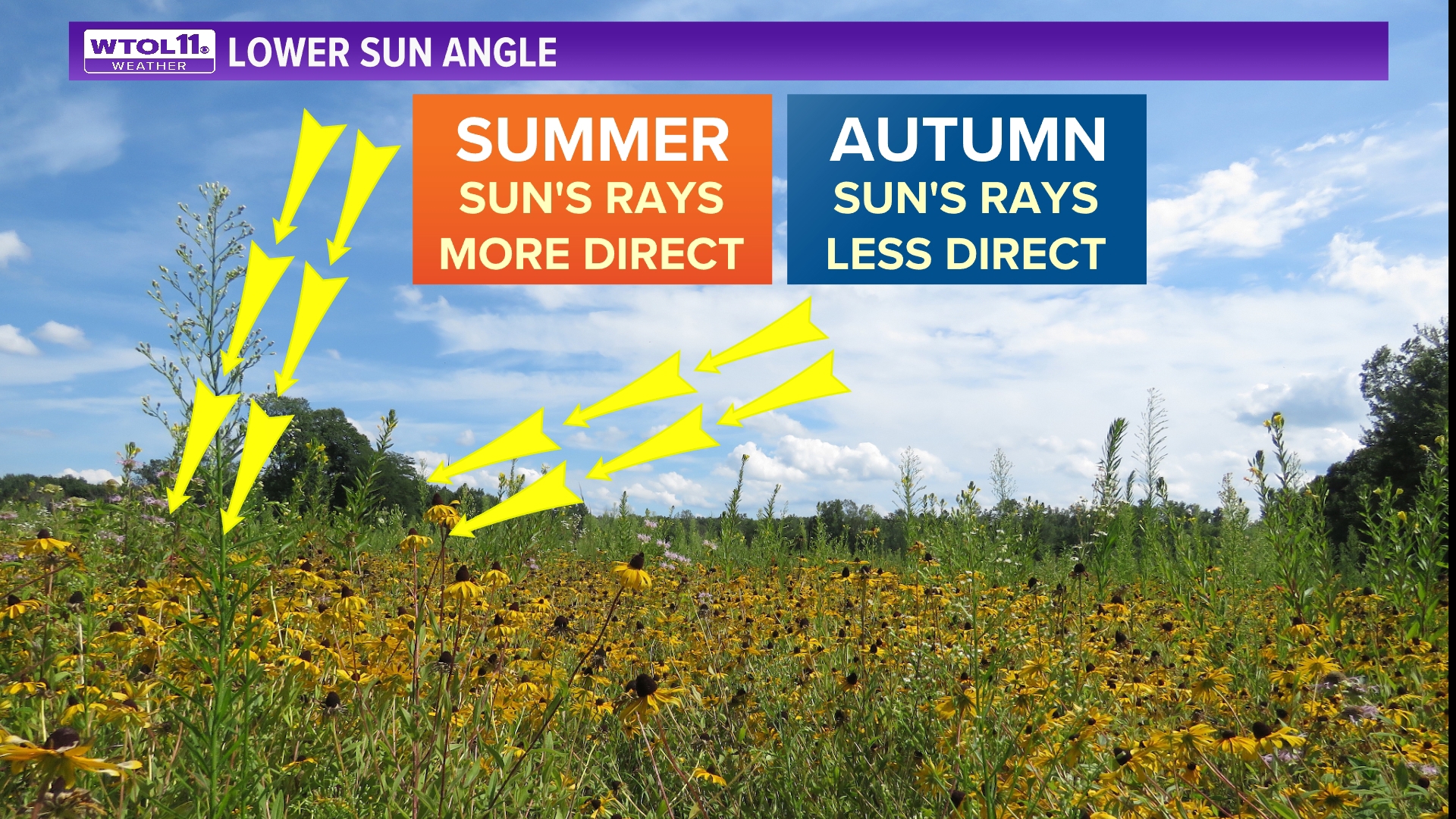TOLEDO, Ohio — Even though this week started off with unseasonably cool conditions, much warmer temperatures are on the horizon for the weekend and end of August. Although the warmest days of summer are in the rearview mirror, late August and early September can still bring the heat.
Meteorologist John Burchfield previews the return of summer heat and what you can expect as we round the corner into September in this week's Climate Friday Newsletter.
Temperatures will surge to the upper-80s this weekend, climbing to 90 degrees on several occasions early next week. By late summer, this magnitude of warmth is more uncommon, and our average high temperature drops to 82 degrees by the end of August.

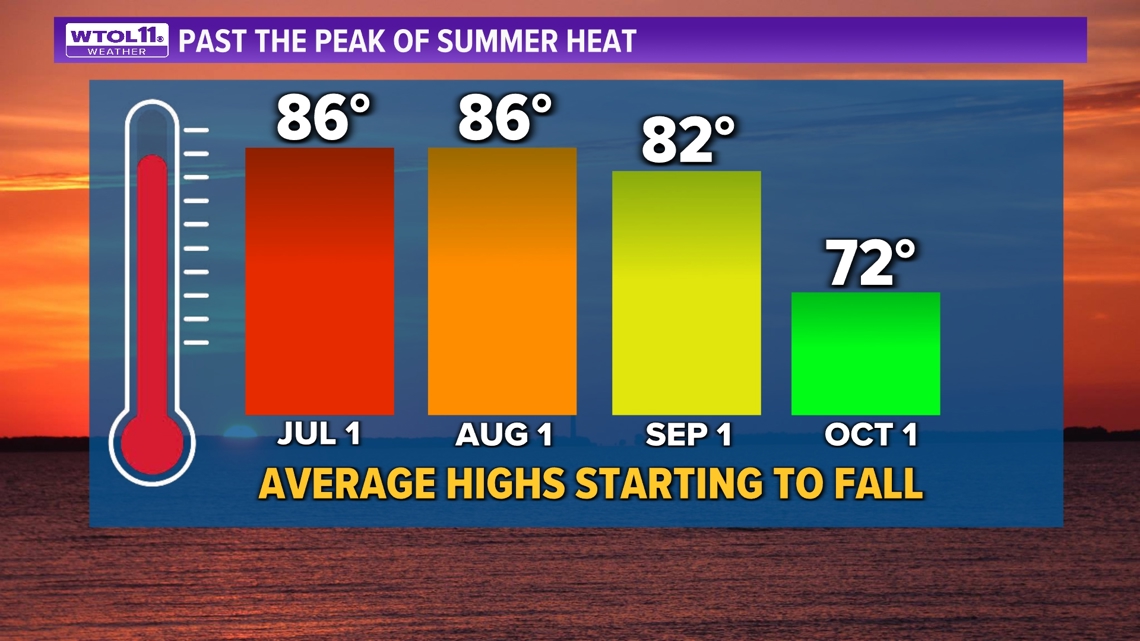
September brings a significant change in the weather with a rapid drop in both daytime highs and overnight lows. Over the course of the month, average high temperatures are 77.7 degrees and normal overnight lows are 55.1.
This drop in temperatures represents the gradual shift from summer into autumn. Early September still feels more like summer with an average high of 82 degrees, but the end of the month is more characteristic of autumn with normal highs in the low-70s. September is statistically the fourth warmest month of the year, falling behind July, August, and June.
Average highs over these summer months peak during the month of July, the hottest month of the year with a mean high temperature of 86.5 degrees. September is normally much warmer than May, which brings an average high temperature of only 73.3 degrees. October turns drastically cooler with an average high of only 65 degrees. In summary- summertime isn't over yet, but we're inching toward the fall season as we look ahead to the start of September.
In addition to cooler temperatures, September brings shorter days and darker evenings. Sunset time has already turned significantly earlier as the fall equinox draws closer. Sunset time peaks at 9:12 p.m. in late June and early July, dropping back to 8:51 p.m. by the start of August.

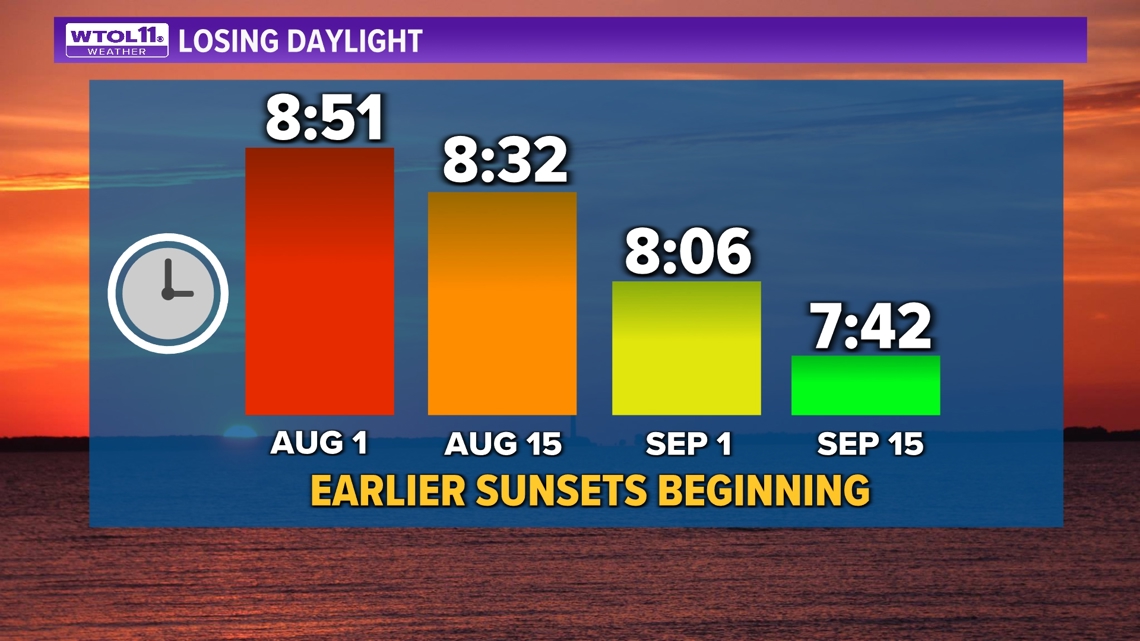
By mid-August, sunset time falls back to 8:32 p.m. By the start of September, sunset is only at 8:06 p.m. Mid-September brings much darker evenings with a sunset time of 7:42 p.m.
Not only is the length of each day shorter during September, but the sun's rays are less direct. You may have noticed that the sun doesn't feel quite as hot as it did during the peak of summer. Sun angle decreases as we move toward the fall season.
The sun strikes northwest Ohio and southeast Michigan at a 71 degree angle in early July, explaining why summer sunshine feels so warm. By September 1, the Sun angle declines to 56 degrees, indicative of a less direct trajectory of the Sun's rays.

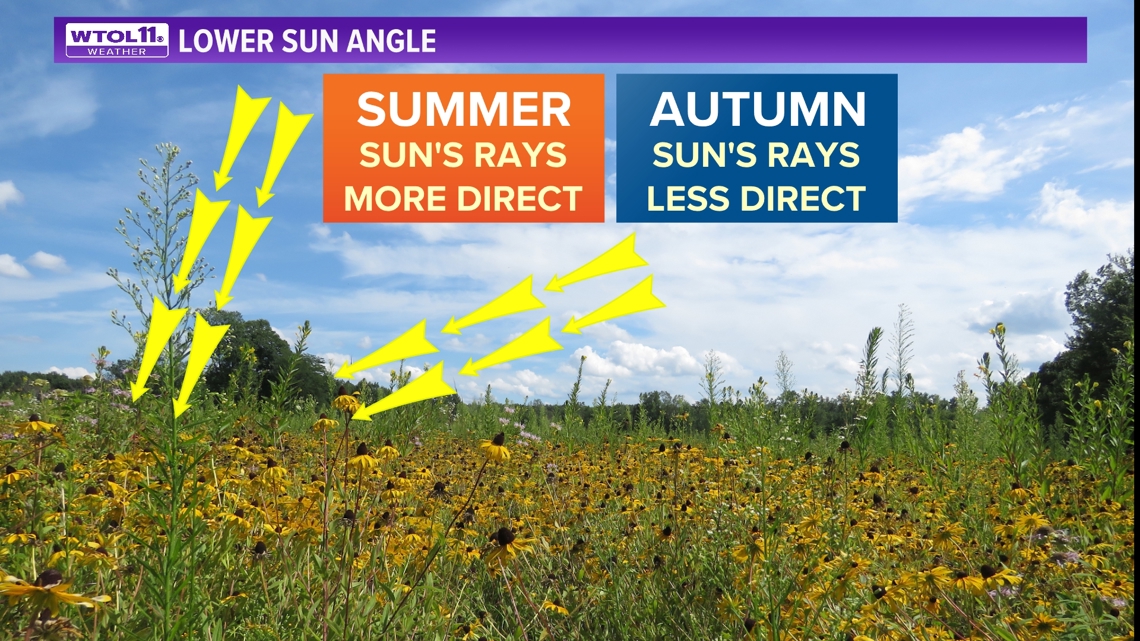
While you can still get a sunburn during the fall, it doesn't occur quite as rapidly as during the heart of summer. Spending time outdoors during the midday sun also feels a bit more bearable during autumn than summertime. You may have noticed this change already with a sunny and cooler start to the week.
Despite the recently below-average temperatures, August heat will return this weekend with temperatures surging to the upper-80s. A high-pressure ridge in the jet stream will usher in warmer-than-average conditions for much of the Great Lakes and Midwest regions.
New England will remain slightly below-average with an area of low-pressure centered over the Atlantic seaboard, but much of the contiguous United States will turn much hotter for the final days of August.

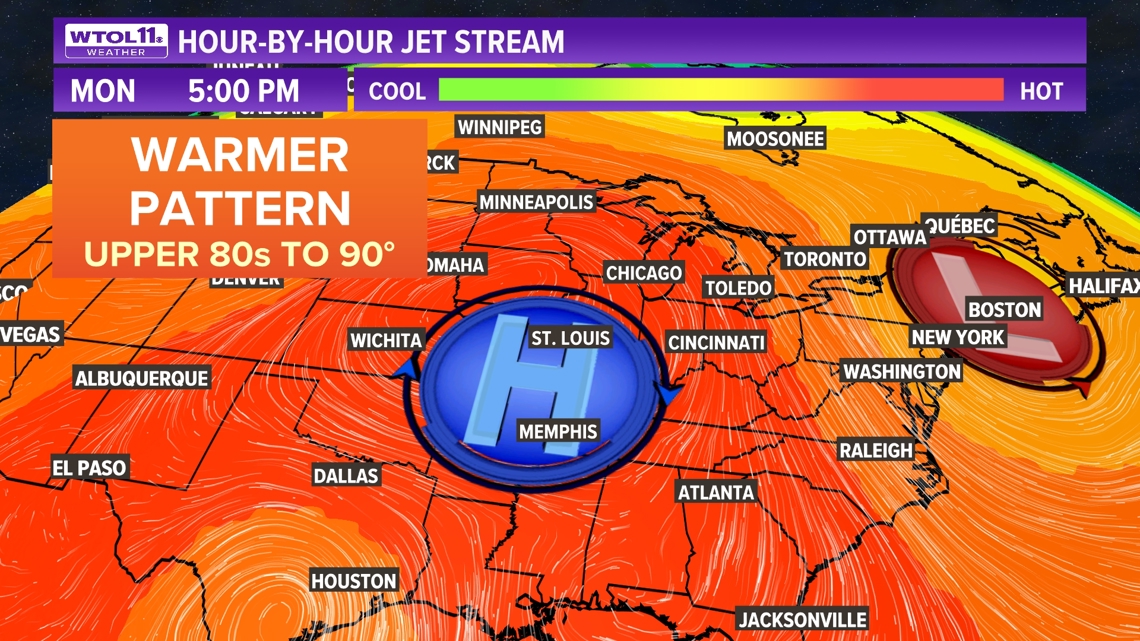
This warmer trend may linger into the first couple days of September, though temperatures are expected to moderate to the low to mid-80s by the tail end of the 10-day forecast. As August ends and September begins, the WTOL 11 weather team will keep you posted on changes in the weather that will impact you. Subscribe to the Climate Friday Newsletter for new content every week!
WATCH MORE FROM CLIMATE FRIDAY

